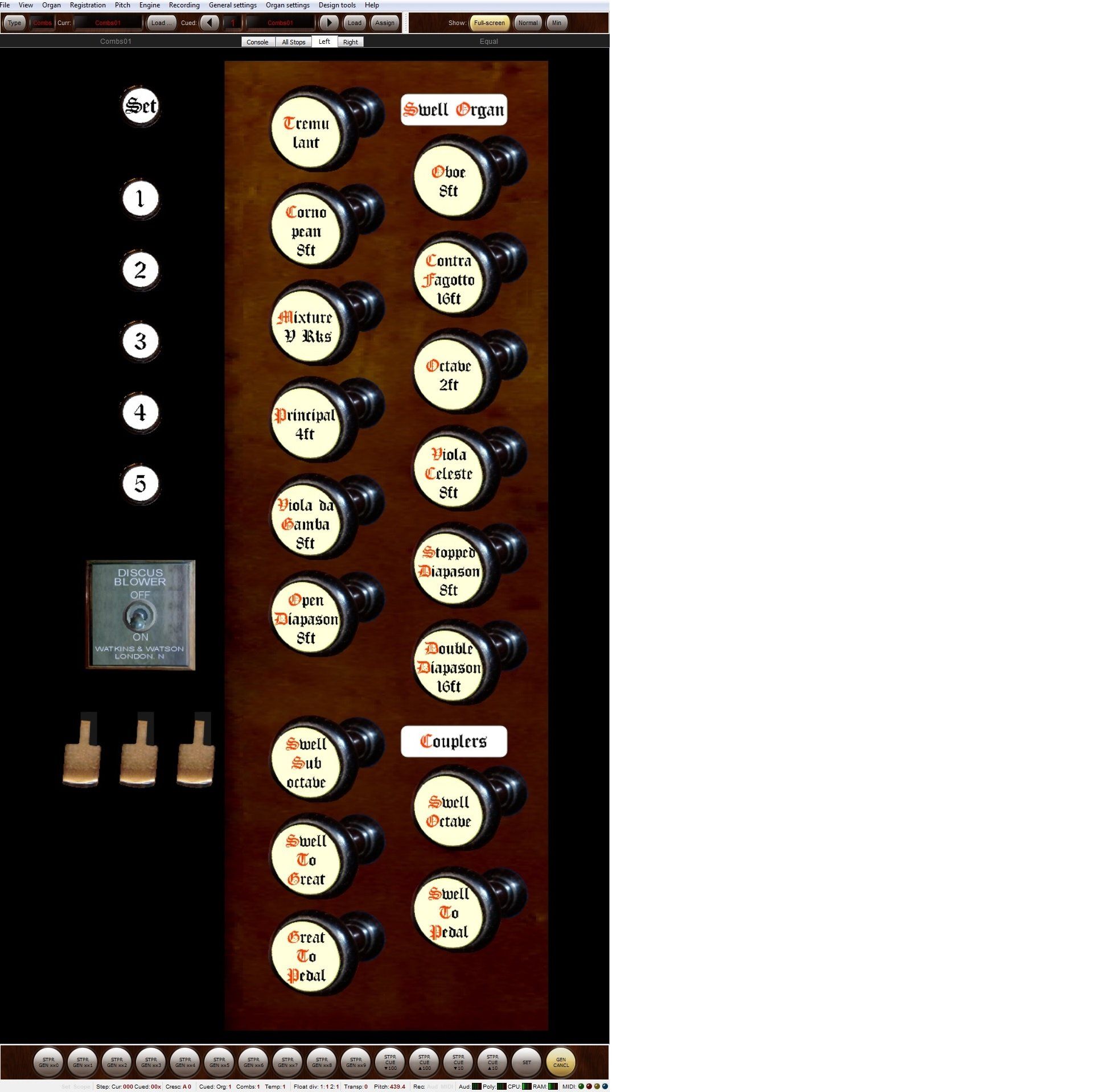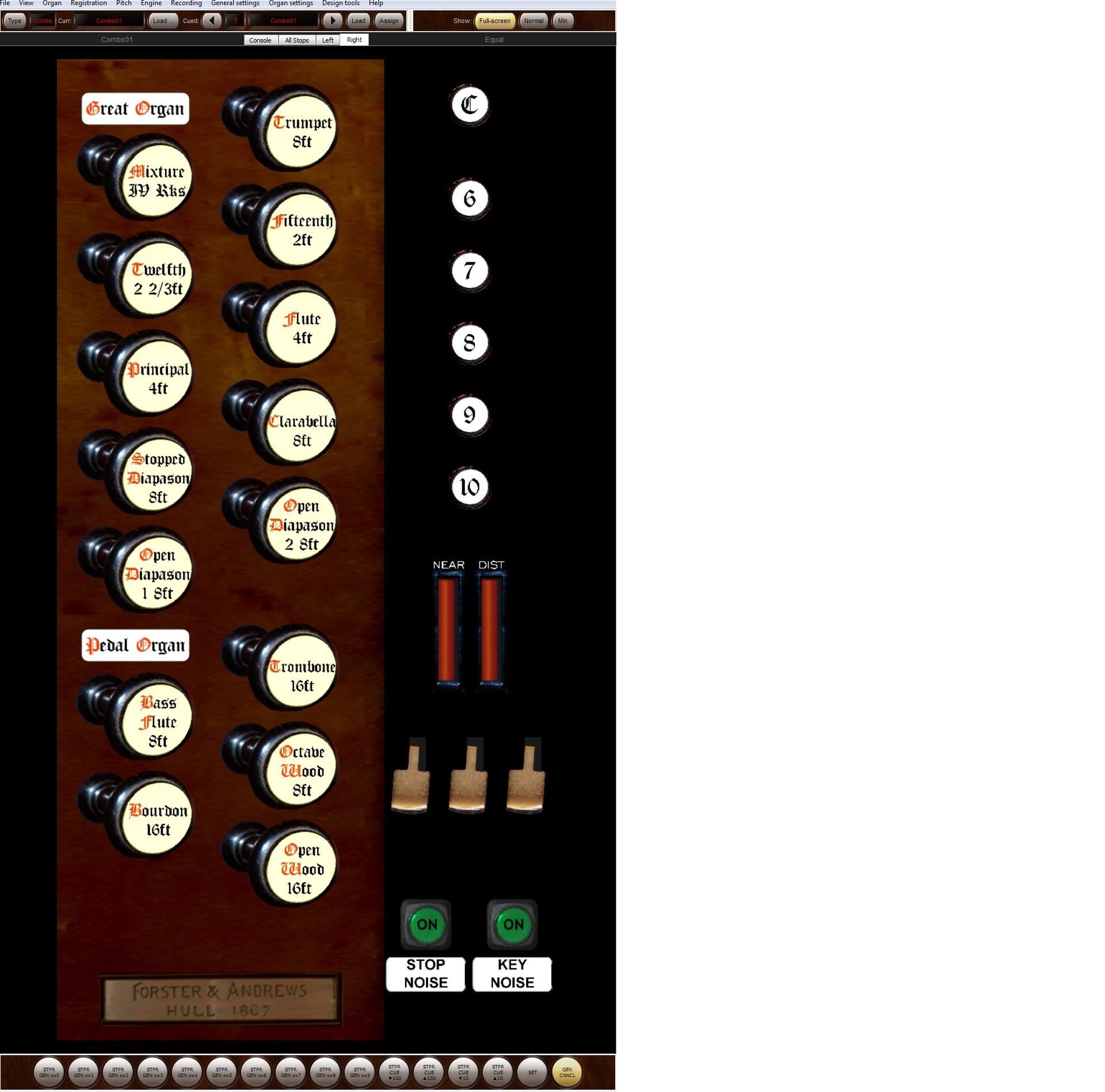Forster & Andrews 1867
GREAT ORGAN
SWELL ORGAN
PEDAL ORGAN
In addition to the standard intermanual and pedal couplers we have provide Octave and Sub-octave couplers to the Swell as well as A Pedal Bass and a Swell to Great melody coupler. The organ is presented in two perspectives: Close and Medium Distant. The volume levels of each perspective can be adjusted via the volume sliders.
Screenshots
Below are screenshots of the console showing the single screen console as well as the two vertical jambs.
The graphics and some additional features were developed by Olivia Nagioff.
Larger images can be downloaded from the Cloud by pressing the buttons adjacent to the thumbnails.
Demos
The first demo of the William Mathias Processional has been kindly provided by "Mirch"





